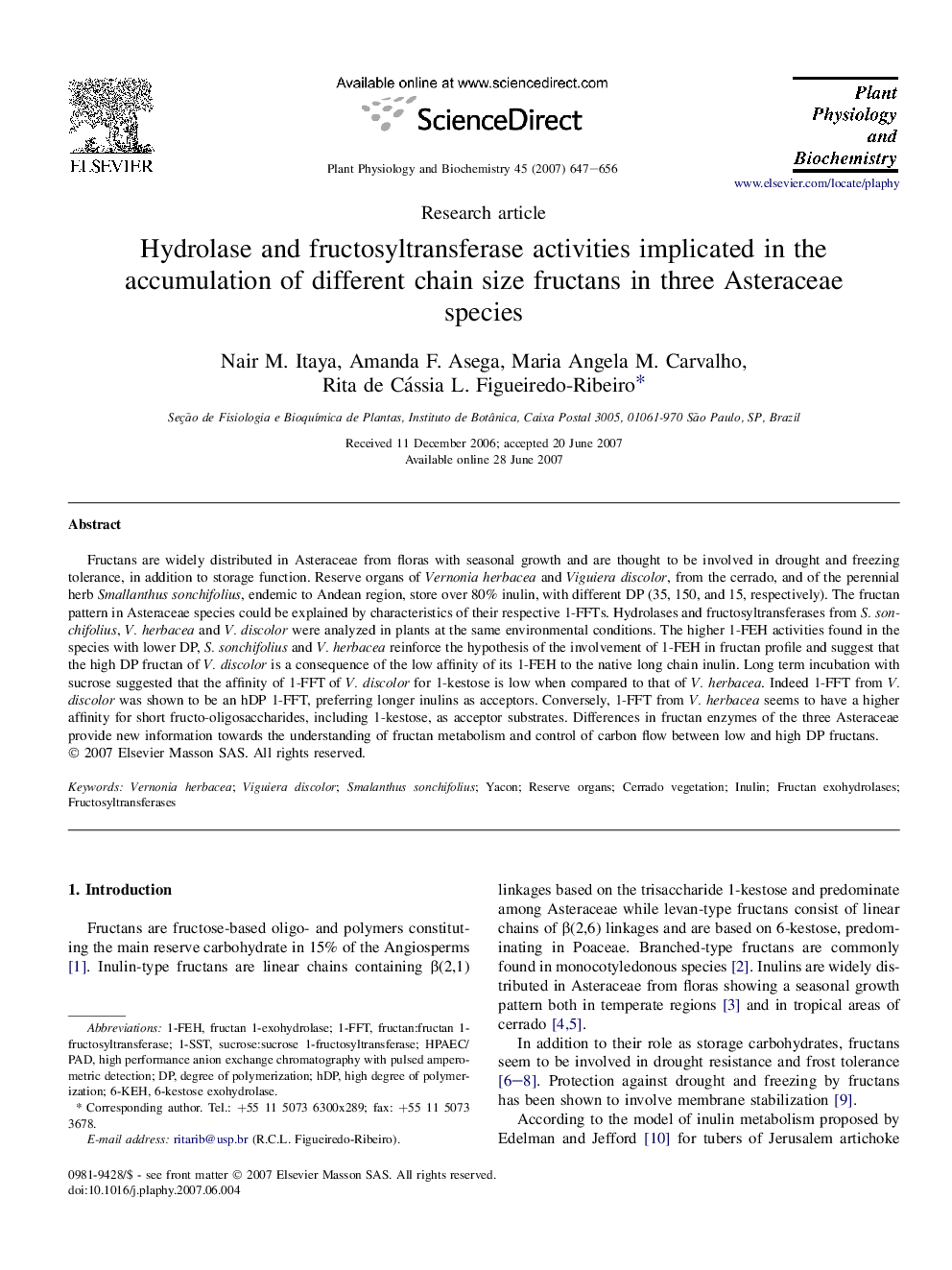| Article ID | Journal | Published Year | Pages | File Type |
|---|---|---|---|---|
| 2016690 | Plant Physiology and Biochemistry | 2007 | 10 Pages |
Fructans are widely distributed in Asteraceae from floras with seasonal growth and are thought to be involved in drought and freezing tolerance, in addition to storage function. Reserve organs of Vernonia herbacea and Viguiera discolor, from the cerrado, and of the perennial herb Smallanthus sonchifolius, endemic to Andean region, store over 80% inulin, with different DP (35, 150, and 15, respectively). The fructan pattern in Asteraceae species could be explained by characteristics of their respective 1-FFTs. Hydrolases and fructosyltransferases from S. sonchifolius, V. herbacea and V. discolor were analyzed in plants at the same environmental conditions. The higher 1-FEH activities found in the species with lower DP, S. sonchifolius and V. herbacea reinforce the hypothesis of the involvement of 1-FEH in fructan profile and suggest that the high DP fructan of V. discolor is a consequence of the low affinity of its 1-FEH to the native long chain inulin. Long term incubation with sucrose suggested that the affinity of 1-FFT of V. discolor for 1-kestose is low when compared to that of V. herbacea. Indeed 1-FFT from V. discolor was shown to be an hDP 1-FFT, preferring longer inulins as acceptors. Conversely, 1-FFT from V. herbacea seems to have a higher affinity for short fructo-oligosaccharides, including 1-kestose, as acceptor substrates. Differences in fructan enzymes of the three Asteraceae provide new information towards the understanding of fructan metabolism and control of carbon flow between low and high DP fructans.
